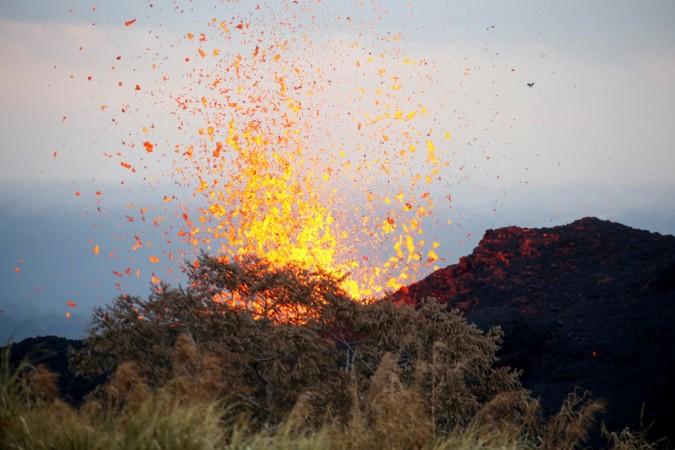
In what could be the largest musical instrument on the planet, the Cotopaxi volcano in central Ecuador with its deep, cylindrical crater formation makes unique sounds that could be recorded to monitor its activity.
Recordings were made at the volcano right after eruptions in 2015, in the infrasound frequency and it was caused by the changing shape of the volcano's crater, reports the American Geophysical Union (AGU). The deep, narrow tube-like crater was found to force the air inside to reverberate as the volcano rumbled. This seemed to create sound waves comparable to a pipe organ where the air is forced through metal tubes under pressure.
"It's the largest organ pipe you've ever come across," said Jeff Johnson, a volcanologist at Boise State University in Idaho and lead author of a new study detailing the findings in the Geophysical Research Letters, a journal of the AGU.
The geometry of volcano craters makes a big difference in the sounds a volcano can produce, say researchers and each volcano could have its own unique sound signature. Once geologists are able to better understand the voice of each volcano, they are better able to monitor these ticking natural disasters. Based on the changes in voice, it could signal an impending eruption, notes the report.
"Understanding how each volcano speaks is vital to understanding what's going on," Johnson said.
"Once you realize how a volcano sounds, if there are changes to that sound, that leads us to think there are changes going on in the crater, and that causes us to pay attention."
Hawaiian volcano Kilauea is now erupting and the ongoing lava spew is being seen as a kind of proving ground for studying how changes that crater undergoes in terms of geometry influences the sounds it makes. Kilauea's summit had a lava lake that got drained out as the magma flowed out and downward, says the report. This changes the shape of the crater, hence sounds it makes must also naturally change
The lava lake at Kilauea's summit drained as the magma supplying it flowed downward, which should change the tones of the infrasounds emitted by the crater. Listening to the infrasound coming out of mount Kilauea could help scientists monitor magma depth from a safe distance and even forecast and eruptive hazards, should they occur. In the case of Kilauea, as magma levels dropped from the summit, it could have possibly heated up groundwater reserves that is known to lead to violent eruptions. This could be the case over the last few weeks in Hawaii.
"It's really important for scientists to know how deep crater is, if the magma level is at the same depth and if it's interacting with the water table, which can create a significant hazard,"said David Fee, a volcanologist at the University of Alaska Fairbanks who was not connected to this study.
For the most part of the 20 century, Cotopaxi lay dormant, says the release, but since August 2015, it has erupted several times, shooting ash and smoke into the air, affecting more than 300,000 people who lived in the region. The mountainous region is also snow-capped and a massive eruption could cause the melting of a lot of ice, triggering hot mudslides apart from the lava and ash.
The 2015 eruption, while minor, blew the crater floor off and dropped it down, out of sight, notes the report. It is about 100 meters wide and 300 meters deep.
It was then that the tube-like opening started to make strange sounds called the tornillos or screws, say the scientists.
"It's like opening a bar door that goes back and forth for a minute and a half," Johnson said. "It's a beautiful signal and amazing that the natural world is able to produce this type of oscillation."
















